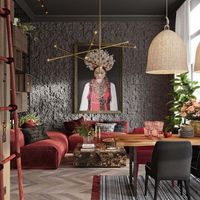## The West Side: A New Frontier in OM Journal Design
This document explores the design principles and considerations behind the "West Side" table for OM Journal. This project aims to create a visually appealing and user-friendly table that enhances the user experience while delivering important information in a clear and concise manner.
Part 1: Understanding the User and Context
User Persona:
The primary users of the OM Journal website are individuals interested in meditation, mindfulness, and spiritual practices. They are likely to be tech-savvy, appreciate clean and modern design, and value easy access to information. They are also likely to be visually oriented, seeking engaging and visually appealing content.
Context:
The OM Journal table is a crucial component of the website's layout, providing users with an accessible and organized way to explore journal entries, articles, and other content. Its design needs to complement the overall website aesthetics and promote user engagement.
Part 2: Design Principles and Considerations
Visual Hierarchy:
The design emphasizes visual hierarchy to guide the user's eye and draw attention to the most important information. This is achieved through:
* Font Size and Weight: A clear distinction between heading and body text ensures that titles and key information stand out.
* Color Contrast: Strategic use of color highlights important sections and elements, creating a visually appealing and organized table structure.
* Spacing and Alignment: Consistent spacing and alignment create a clean and easily readable layout, facilitating navigation and information comprehension.
User Experience:
* Accessibility: The design prioritizes accessibility, ensuring that all users, including those with disabilities, can easily navigate and understand the information presented.
* Responsiveness: The table design is responsive, adapting seamlessly to different screen sizes and devices, providing an optimal user experience across multiple platforms.
* Navigation: Intuitive navigation is essential for a positive user experience. The table design facilitates smooth scrolling and clear labeling, enabling users to quickly locate the information they need.
Content Structure:
* Clear and Concise: The information presented in the table is clear, concise, and easy to understand. This minimizes user frustration and promotes engagement.
* Relevant and Engaging: Content is relevant to the user's interests and presented in an engaging manner. This includes visually appealing elements like images, videos, and interactive features.
* Organized and Categorized: The table is organized logically, categorized appropriately, and utilizes filters or search functionalities to allow users to easily find specific content.
Part 3: Design Elements
1. Table Structure:
* Grid System: A grid system provides a structured foundation for the table, ensuring consistent spacing, alignment, and organization.
* Rows and Columns: The table is divided into clear rows and columns to present information in a logical and easily digestible format.
* Headers and Footers: Headers and footers provide contextual information and enhance table navigation.
2. Content Display:
* Text Format: Text is displayed in a clear and easy-to-read font with appropriate spacing and line height.
* Images and Videos: Images and videos are incorporated strategically to enhance the visual appeal and engagement of the table content.
* Interactive Elements: Interactive elements such as hover effects, tooltips, and expand/collapse functionality can enhance user interaction and provide additional information.
3. Styling and Aesthetics:
* Color Palette: A limited color palette is used to create visual consistency and a clean aesthetic.
* Typography: Typography is chosen to be legible, consistent with the website's overall style, and easily digestible.
* Visual Hierarchy: The design employs visual hierarchy to draw attention to important information and facilitate navigation through the table.
Part 4: Implementation and Testing
1. Prototyping and Feedback:
* A prototype of the "West Side" table is created for user testing and feedback. This allows for iterative design improvements based on user input.
2. Usability Testing:
* Usability testing is conducted to evaluate the user experience of the table design. This involves observing users interacting with the table and identifying areas for improvement.
3. Technical Implementation:
* The "West Side" table design is implemented using HTML, CSS, and JavaScript. The code is optimized for performance and accessibility.
4. Continuous Improvement:
* After implementation, the table design is monitored for user engagement and feedback. Regular updates and improvements are made based on data analysis and user input, ensuring the table remains effective and user-friendly.
Part 5: The Future of the West Side Table
* The "West Side" table is envisioned as a flexible and scalable design that can accommodate future content growth and website updates.
* The design is adaptable to future content and data structures, providing a foundation for long-term use.
Conclusion:
The "West Side" table for OM Journal is designed to be a visually appealing, user-friendly, and effective tool for delivering important information and enhancing user engagement. By focusing on user experience, visual hierarchy, content structure, and technical implementation, the table aims to provide a positive and informative experience for all users of the OM Journal website.



















Comment (0)